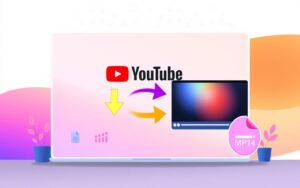Table of Contents
Navigating long YouTube videos without clear markers can frustrate viewers. Imagine scrolling endlessly—like facing a wall of text. That’s where YouTube chapters come in. They break content into digestible sections, boosting both engagement and watch time.
These automatic chapters or manually added markers transform the viewer experience. They let your audience jump to key moments effortlessly. Plus, Google displays them as key moments in search results, enhancing SEO.
Whether you host tutorials, webinars, or educational content, chapters make your videos more accessible. Platforms like Wistia also support this feature. Ready to optimize? Later sections cover step-by-step methods, including YouTube’s 10-second minimum rule.
What Are YouTube Video Chapters?
YouTube chapters act as digital signposts for video content. They divide lengthy uploads into labeled sections, letting viewers skip to relevant parts instantly. Think of them as a table of contents for your videos.
Definition and Purpose of YouTube Chapters
Chapters are timestamp markers in the video description or progress bar. Each segment must be at least 10 seconds long, starting from 00:00. For example:
| Timestamp | Chapter Title |
|---|---|
| 00:00 | Introduction |
| 01:30 | Tools Needed |
| 03:45 | Step-by-Step Tutorial |
Auto-generated chapters use AI to detect scene changes, while manual entries offer precise control. Both methods require a minimum of three sections.
How Chapters Appear in Videos
On desktop, hover over the progress bar to see chapter thumbnails. Mobile users tap the description box to view the list. Note: Videos with strikes or inappropriate content may lose chapter eligibility.
Why You Should Add Chapters to Your YouTube Videos
Ever clicked on a lengthy tutorial only to spend minutes hunting for the right segment? YouTube chapters eliminate this friction, turning passive viewers into engaged participants. They’re not just markers—they’re tools for retention and discoverability.
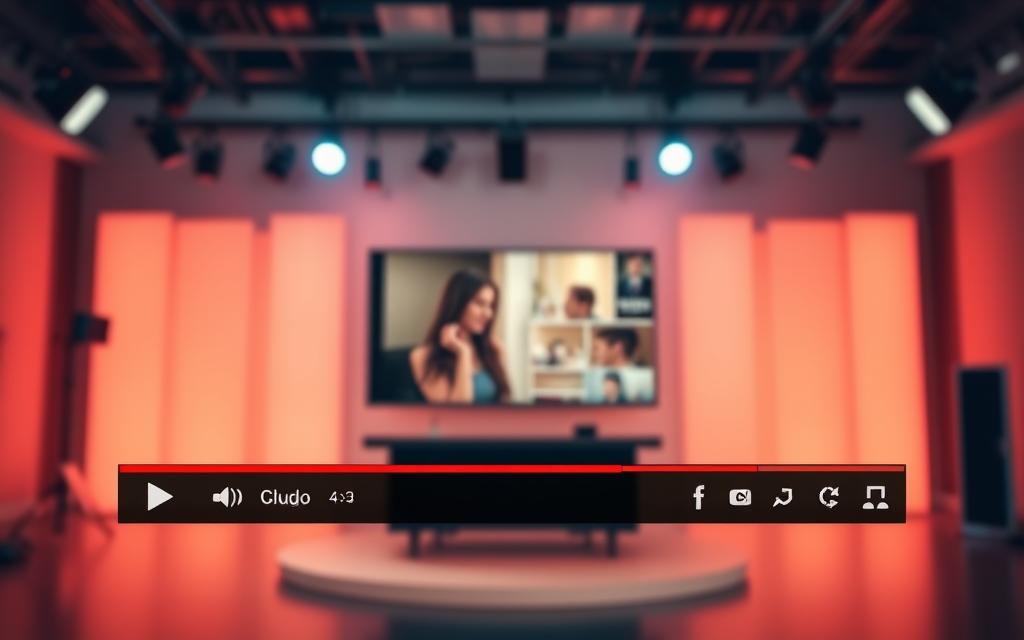
Improved Viewer Experience
67% of audiences use chapters to navigate tutorials, according to third-party studies. YouTube’s internal data shows a 15% average watch time increase when chapters are present. Why? Chapters create an information scent—visual cues that guide users to relevant content swiftly.
Platforms like Wistia offer ad-free chapter customization, but YouTube’s native feature reaches broader audiences. Avoid overloading narrative-driven videos, though. Excessive markers can disrupt storytelling flow.
Enhanced SEO and Search Visibility
Google indexes chapters as standalone search results, displaying them as key moments in SERPs. This boosts click-through rates by up to 30%. Each chapter title becomes metadata, packed with SEO-friendly keywords.
Rich snippets—like timestamps in Google’s video carousel—give your videos prime real estate. The algorithm prioritizes content that retains viewers, making chapters a dual win for engagement and rankings.
How to Add Chapters to YouTube Videos Manually
Manual chapter creation gives creators full control over their video’s structure. Unlike auto-generated markers, custom timestamps ensure precise segmentation for tutorials, interviews, or multi-topic content.
Step 1: Log in to YouTube Studio
Access your creator dashboard via YouTube Studio. Ensure you’re logged into the account linked to your video. Mobile users must download the Studio app for on-the-go edits.
Step 2: Navigate to Your Video
Locate the video in the “Content” tab. Click “Details” to open the editor. Scroll to the description box—this is where chapters are added.
Step 3: Add Timestamps and Chapter Titles
Follow this strict format for each segment:
| Timestamp | Example Title |
|---|---|
| 00:00 | Introduction |
| 02:15 | Tools & Materials |
| 05:40 | Demonstration |
Key rules:
- Start at 00:00—missing this disables chapters.
- Minimum 10 seconds per segment.
- Avoid special characters (e.g., #, @) in chapter titles.
Step 4: Save Your Changes
Click “Save” to apply. Changes may take 10 minutes to appear. Mixed manual/auto chapters default to your edits.
Pro Tip: Use transcription tools like Otter.ai to generate accurate timestamps for long-form content.
How to Enable Automatic Chapters on YouTube
Automated timestamps transform lengthy uploads into skimmable content. YouTube’s AI scans video data to create key moments, saving creators hours of manual work. Over 90% of English-language videos qualify for this feature.
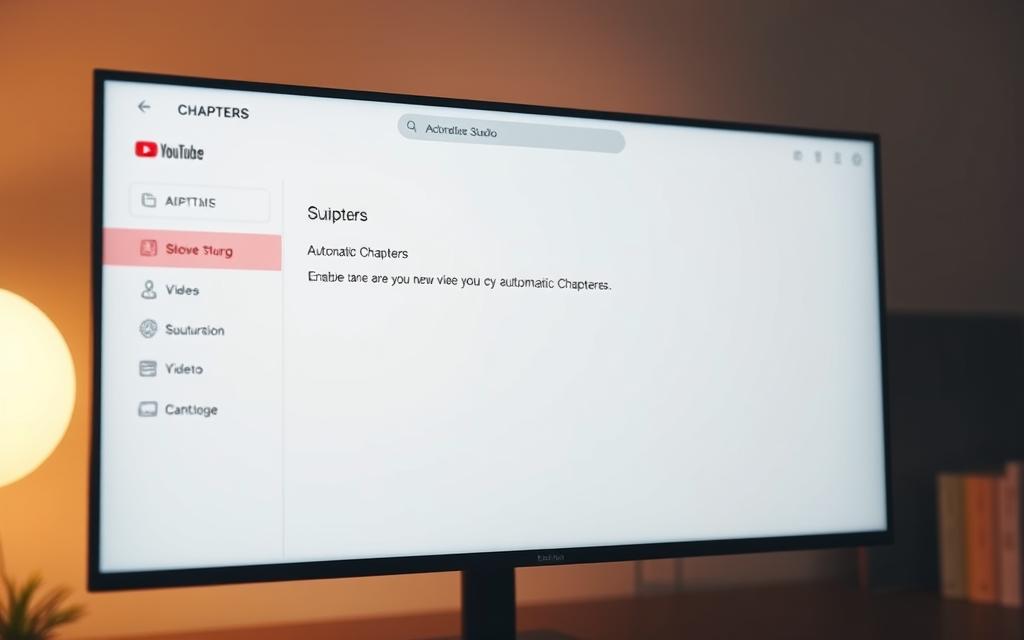
Step 1: Access YouTube Studio
Open YouTube Studio from your creator dashboard. Navigate to the Content tab and select the video you want to update. Auto-chapters work best for structured formats like lectures or listicles.
Step 2: Enable Automatic Chapters
Click Editor in the left menu. Toggle allow automatic chapters under the “Automatic” section. Processing takes 5 minutes to 24 hours, depending on video length.
Step 3: Edit Auto-Generated Chapters (Optional)
AI analyzes audio transcripts and scene changes, but accuracy varies by genre:
- Tutorials: 85% precision (clear transitions help).
- Vlogs: 60% (conversational flow confuses AI).
Refine titles or timestamps within 48 hours of generation. Non-English videos have limited support—manual entries may be needed.
Best Practices for Naming YouTube Chapters
Effective chapter titles guide viewers through your content like a roadmap. Clear labels boost engagement and help your audience find value quickly. Follow these rules to optimize your titles for both search and usability.
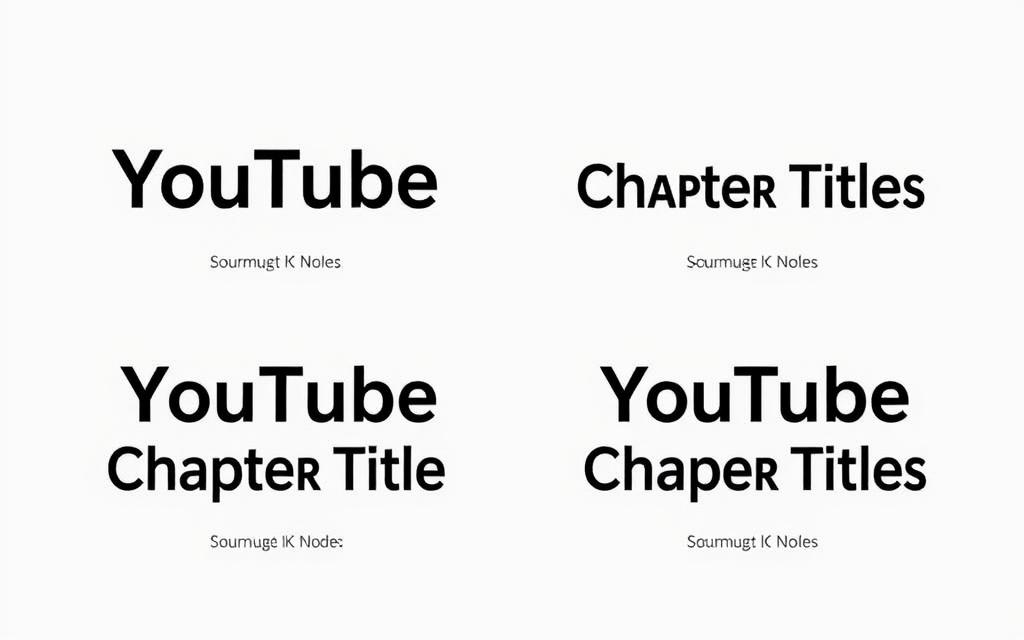
Keep Titles Concise and Descriptive
Ideal chapter titles are 3–5 words long. For example:
| Weak Title | Strong Title |
|---|---|
| “Stuff You Need” | “Essential Baking Tools” |
| “Part 1” | “Mixing the Dough” |
Top channels use title case (e.g., “Preparing the Ingredients”). Avoid vague phrases like “Step 2″—describe the action instead.
Use Keywords Strategically
Integrate SEO keywords naturally. Place primary terms at the beginning:
- Before: “How to Frost a Cake”
- After: “Cake Decorating: Frosting Techniques”
Google indexes titles as key moments, so prioritize terms your audience searches for.
Maintain Consistency
Create a style guide for series or branded content. For example:
- Always start with verbs (“Apply Glaze”, “Cool Layers”).
- Use parallel structure (all questions or all statements).
A/B test variations to see which titles increase click-through rates. Avoid clickbait—accuracy builds trust.
When to Use YouTube Chapters (And When to Skip Them)
Not all videos benefit from segmentation—some thrive on uninterrupted flow. Chapters excel in structured content but can disrupt immersive storytelling. Use this guide to decide when they enhance viewer experience or hinder it.
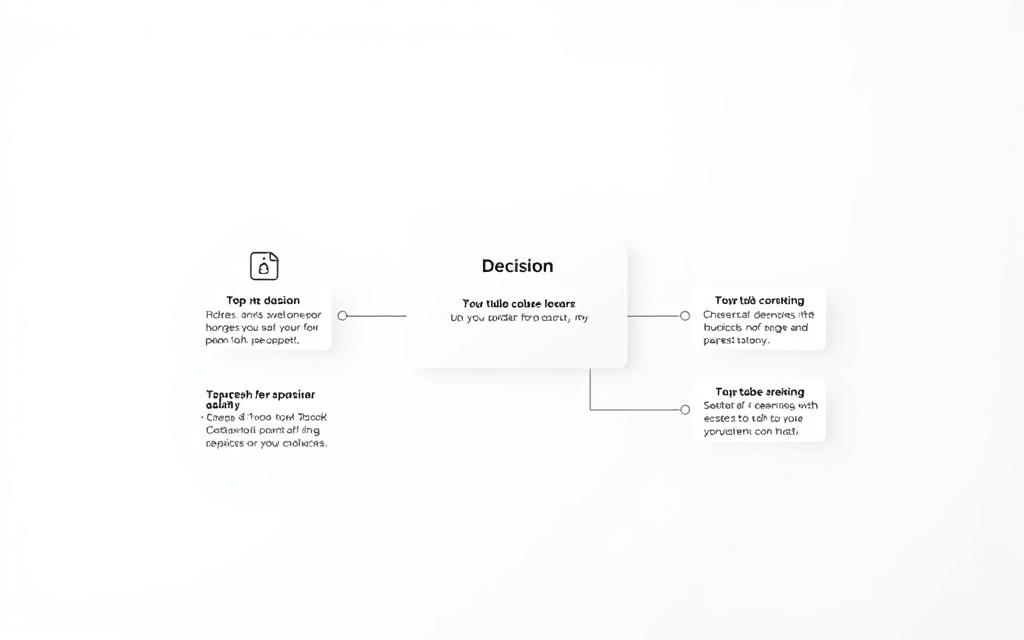
Ideal Video Types for Chapters
82% of tutorial viewers use chapters, per Wistia research. These formats gain the most:
- Tutorials/How-tos: Step-by-step guides (e.g., “Installing Cabinet Hardware”).
- Product Reviews: Segments like “Unboxing,” “Pros/Cons.”
- Lectures/Presentations: Labeled slides or topics.
A tech review case study showed a 20% retention boost with chapters. For deeper insights, explore video chapters best practices.
Videos That Don’t Need Chapters
Short clips under 3 minutes suffer a 40% drop-off with chapters. Avoid them in:
- Music Videos: Disrupts artistic flow.
- Vlogs/Documentaries: Breaks narrative continuity.
- Live Streams: Real-time engagement suffers.
Pro Tip: Test chapters with your audience. Analytics reveal if they boost or reduce watch time.
Conclusion
Structured navigation boosts viewer retention and shares by 18%. Chapters transform lengthy content into skimmable segments, meeting modern attention spans.
Recap key requirements: 10-second minimum timestamps, clear titles, and 00:00 starts. These technical steps unlock SEO perks like rich snippets and higher click-through rates.
For advanced creators, Wistia offers branded chapters with custom thumbnails. Pair these with chapter-specific end screens to drive engagement.
Audit existing videos today—YouTube may soon roll out chapter analytics. Ensure compliance; guideline violations disable this feature.
FAQ
What are YouTube video chapters?
YouTube chapters divide videos into labeled sections using timestamps. They appear as clickable segments in the progress bar, helping viewers navigate content easily.
Why should I add chapters to my videos?
Chapters improve engagement by letting viewers skip to key moments. They also boost SEO, making videos more discoverable in search results.
How do I manually add chapters?
In YouTube Studio, edit your video’s description and include timestamps (e.g., 0:00 Introduction) followed by chapter titles. Save changes to apply them.
Can YouTube generate chapters automatically?
Yes. Enable “Allow automatic chapters” in YouTube Studio. The AI creates sections, but you can edit them for accuracy.
What’s the best way to name chapters?
Use clear, keyword-rich titles like “5-Minute Workout Demo” instead of vague labels. Keep them under 60 characters for readability.
Do all videos need chapters?
Long-form content (tutorials, reviews) benefits most. Short clips or music videos may not need them.
How many chapters should a video have?
Aim for 3–10 chapters, depending on length. A 10-minute video might have 5 sections, while a 30-minute tutorial could use 8–10.
Can I edit chapters after publishing?
Yes. Update timestamps or titles anytime in YouTube Studio. Changes reflect immediately.




